Anglers Booking Team
The expert copywriters at Anglers Booking have meticulously crafted this article. Our dedicated team of writers provides valuable insights and information to enhance your angling experience.
 7 minutes read
7 minutes readThere are no anglers who don't dream of catching a Marlin at least once. There are numerous reasons for its popularity. They are powerful and intelligent. Marlin is a strong fighter, and catching them is a real challenge.
To catch one, you need the right lure. The most effective lures can make the difference between a good day and a great one.

In this guide, we'll dive into the best Marlin lures and explain how each one works in real conditions. You'll find practical tips, the right timing, and clear choices that deliver proven results.
Whether you're chasing your first Marlin or refining your offshore strategy, this guide will help you fish smarter and with confidence.
To catch a Marlin, you must first understand it. Knowing its habits and behavior is important. If you learn how Marlin live, move, and feed, you'll be ready when the moment comes. Let's take a closer look at this amazing fish.
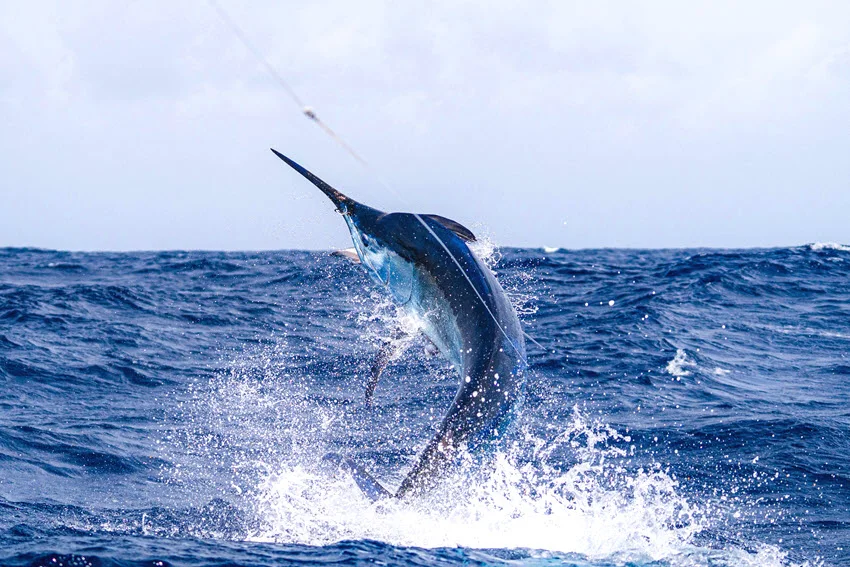
Marlins live in deep waters, they are found in the Atlantic, Pacific, and Indian Oceans. These fish prefer blue water far from the coast, often near temperature breaks or current lines where baitfish gather.
Marlin are strong swimmers. They can travel great distances. Very often, this fish follows schools of Tuna, Mackerel, and squid, their favorite food. When feeding, Marlin use their long bills to stun prey before striking. They are often seen leaping out of the water, a sign of their power and speed.
They prefer warm tropical and subtropical waters and often stay near the surface. You'll find them where currents meet, as these areas hold lots of bait and oxygen-rich water. The best time of day to catch Marlin is early in the morning. Additionally, late in the afternoon is also productive.

Marlin move with the seasons and water temperature. It is important to know when the best period is for catching them. While general seasonal patterns exist, conditions vary by region depending on latitude, ocean currents, and local fisheries.
If you plan your trip around these seasonal changes, your chances of hooking a Marlin are high. Understanding how they move is the first step toward a successful catch.
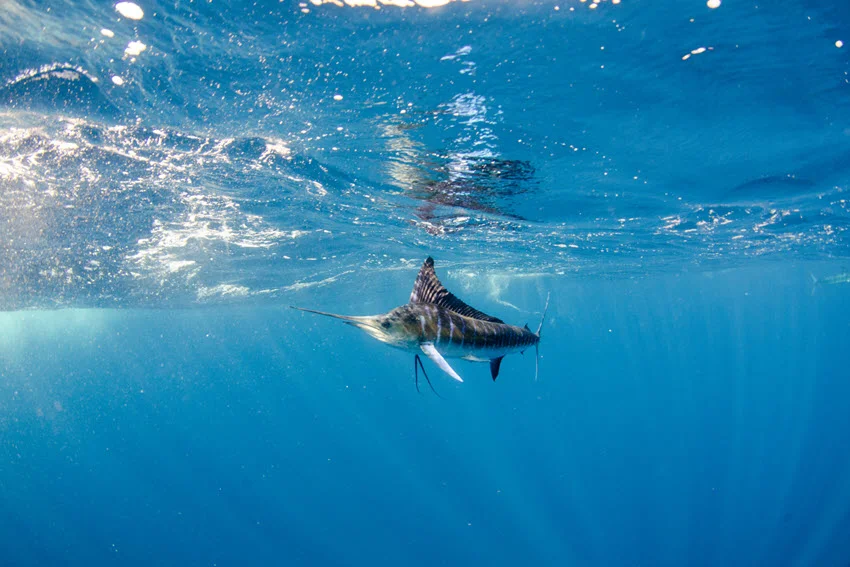
You need a smart plan and proper preparation for every fishing location. In this part, we will reveal to you where you can find Marlin. Additionally, we will inform you about the lures to use in each location.
Using an effective bit in the right location will lead you to a successful fishing day. So, don't miss the tips above.
We are now at the central part of our guide. For success, this is among the most important factors. Let's discover which lures are the most effective.

Bullet-style lures and jet heads are excellent for Marlin. They imitate small flying fish. One of their main characteristic is creating a strong bubble trail in the water. Skirted bullet lures are often used in trolling spreads, positioned on the short rigger or long rigger lines. These lures are effective in calm to moderately choppy conditions.
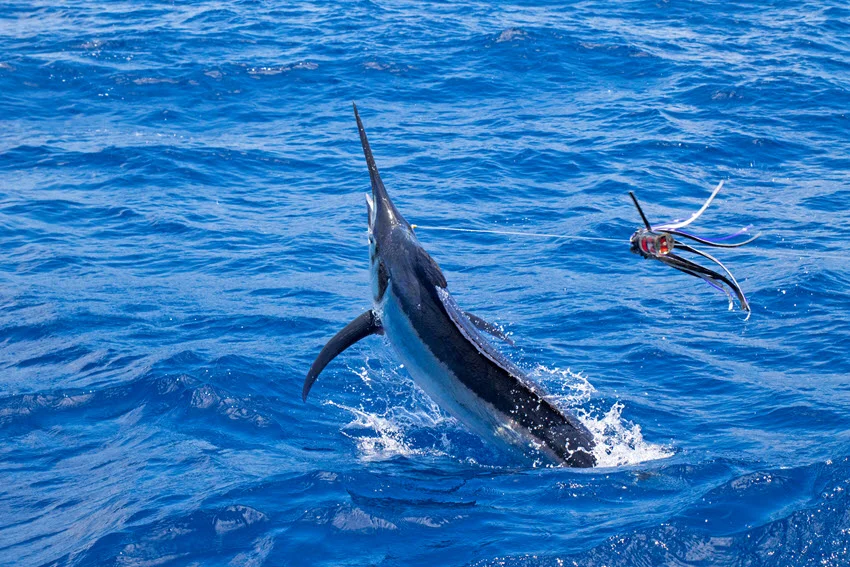
Plunger-style lures are great for making noise. They are productive in rough or wavy seas and are designed to run straight and dive deep before surfacing with a splash. These lures work best when trolling for active Marlin that respond to aggressive surface action.

Classic skirted trolling lures are favorites for Blue Marlin. They have strong action and excellent visibility in clear water. Popular colors include lumo white, green-and-white, and high-contrast mixes (for example, dark inside with a light outer skirt). These lures are best for clear, sunny conditions.
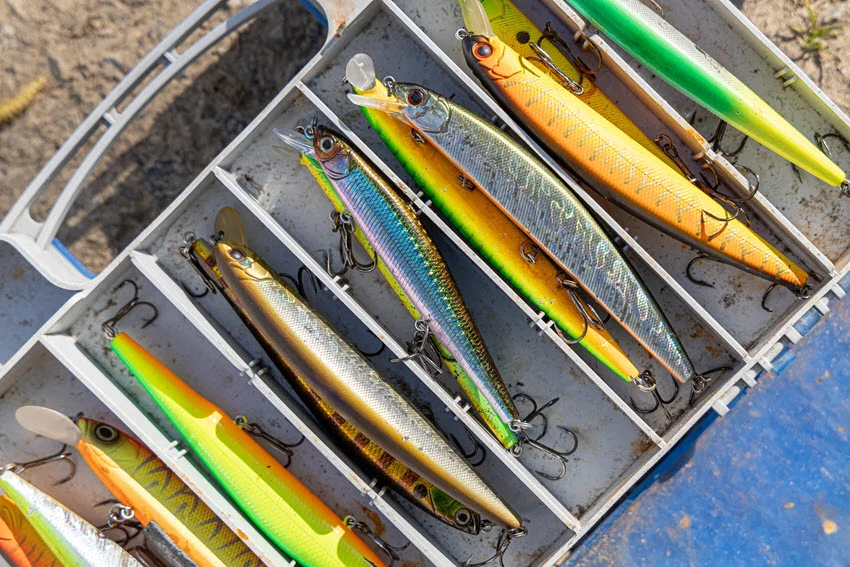
Hard-bodied diving lures with strong vibrations are useful when Marlin are feeding below the surface. These lures dive to targeted depths and can be trolled alongside plungers or bullets to cover different water layers.
In the previous part, we analyzed the best lures for Marlin fishing. In the next section, we explain which strategy to use with lures. Don't miss the parts below.
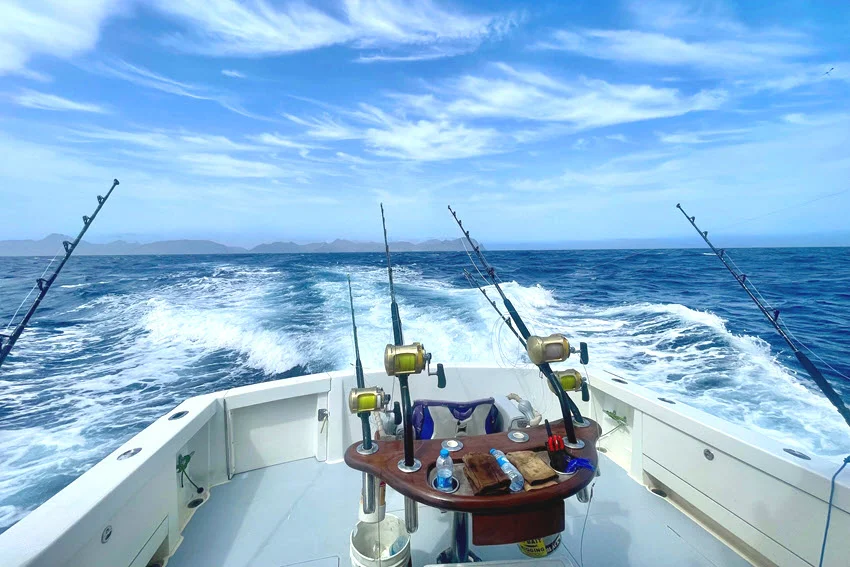
Trolling is the most common method for Marlin. Spread multiple lures behind the boat. For that, you can use outriggers and flat lines. Skirted plugs, bullet lures, and wide-range plugs are ideal. Keep a steady speed, but vary it occasionally to provoke strikes. Trolling covers a large area.
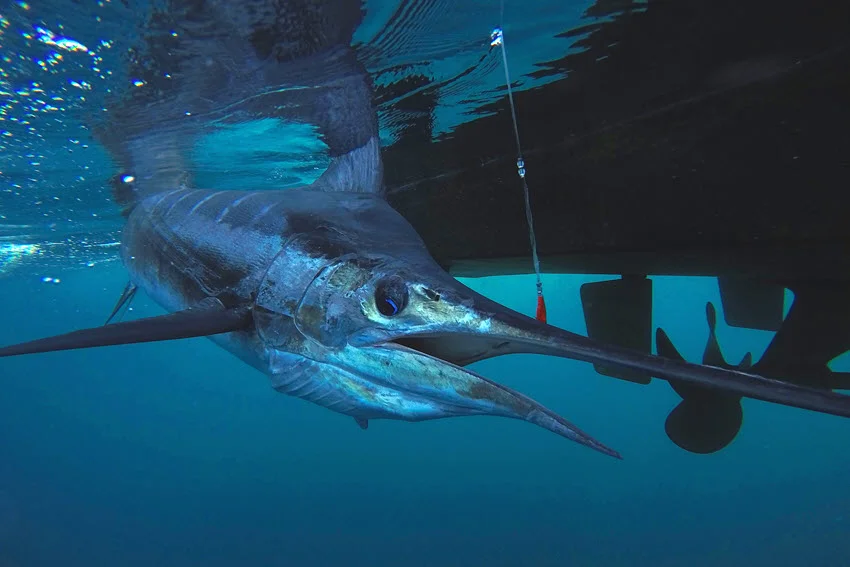
Marlin often follows floating objects, debris, or anchored buoys. Cast lures, such as skirted plugs or live bait, near these objects. Presenting lures close to prey concentrations can produce aggressive strikes.

Vertical jigging works well around underwater structures (reefs or drop-offs). Drop heavy jigs and lift them in short, sharp motions to imitate struggling baitfish. Try to use vertical jigging when Marlin hovers near the bottom or mid-water.
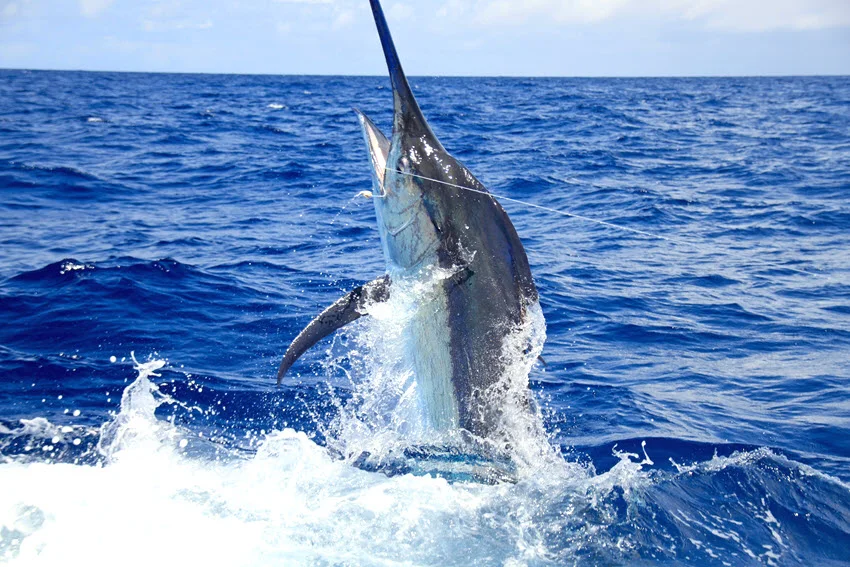
Teasers and spreader bars draw Marlin toward your main lure. Place teasers ahead of your skirted plugs to simulate fleeing baitfish. When Marlin attacks the teaser, the hook lure is ready for a strike.
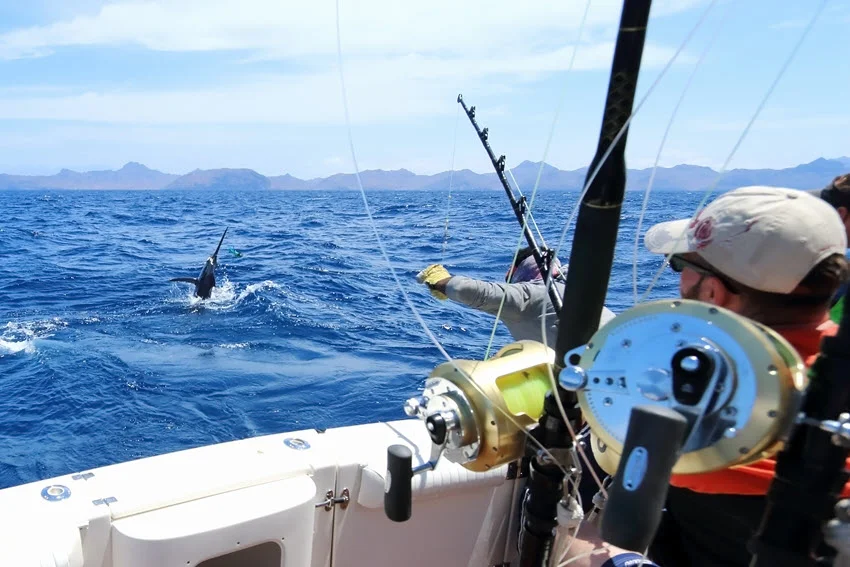
Marlin respond differently to trolling speed and lure depth, so fine-tuning your presentation can make a big difference. Experiment with fast and slow trolling passes, and adjust lure depth using weights or downriggers to find where the fish are most active that day.

Understanding fishing regulations and ethical practices about specific fish species protects fish populations and ecosystems and promotes responsible angling practices.
Anglers Booking Team
Ethical fishing is necessary. Responsible fishing can protect the Marlin population. Many areas have rules and regulations (size limits and daily catch limits). Their goal is to stop overfishing. Some regions require the use of circle hooks.
When handling Marlin, be careful. Remove the hook and release the fish quickly back into the water. If keeping a Marlin is allowed, follow local limits. Treat the fish in a calm and humane manner.
Don't fish in spawning areas. Disturbing Marlin in these places can harm their future numbers. Regulations protect populations of these fish.
Before going offshore, you must know local regulations. Rules may differ by specific fishing zones or states. For example, in Florida, laws and regulations related to fishing are under the Florida Fish and Wildlife Conservation Commission (FWC). Fish legally while enjoying sustainable sport.
Fishing for Marlin is an amazing activity. These powerful fish test your skill and patience. Also, for success, you must have a smart strategy. Using the effective lures in the right spots will lead to effective catching. Stay patient.
What's your favorite lure or method for Marlin fishing? Which one has given you the most exciting strike? Share your answers below. Fellow anglers will love to hear them!

The expert copywriters at Anglers Booking have meticulously crafted this article. Our dedicated team of writers provides valuable insights and information to enhance your angling experience.
Embark on unforgettable fishing adventures with us at Anglers Booking.
book your charterOctober 17, 2025
October 15, 2025
October 10, 2025
October 11, 2025
October 4, 2025
September 29, 2025
September 25, 2025
September 21, 2025

You're now part of our exclusive community. Get ready for premium content and updates straight to your inbox.
close
Subscribe to our newsletter and receive a selection of cool articles every week.
Please enter a valid email address.

Be the first to know when we're back in action.
Please enter a valid email address.
Leave a Comment
Your email address will not be published. Required fields are marked *
Thank you for your comment! It has been submitted for review and will appear on the site shortly.